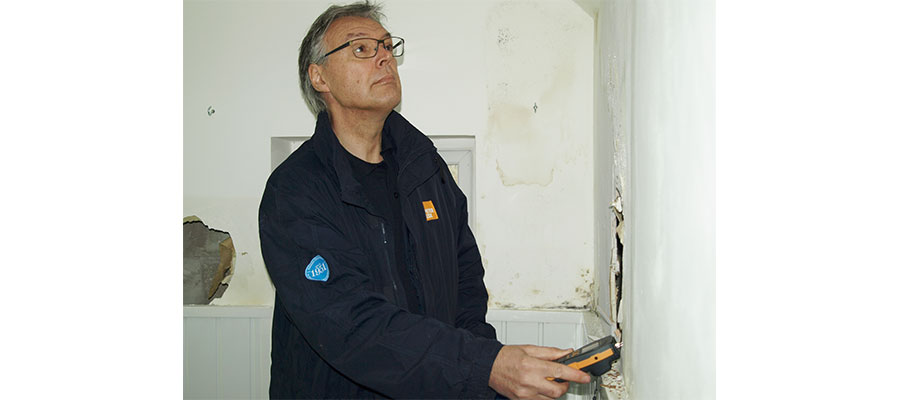Richard Walker, National Technical and Development Manager at Peter Cox, discusses the Homes Act and what the legislation means for housing providers…
This April, the Homes (Fitness for Human Habitations) Act came into effect. The updated legislation allows tenants in England and Wales to pursue legal action against landlords who do not assist with damp, condensation or mould problems, amongst other housing issues.

Property owners are now legally obliged to ensure their properties meet the law’s ‘habitable standards’, including adequate natural lighting and ventilation, as well as freedom from damp and condensation.
A study conducted by Rentokil Property Care and Peter Cox highlighted some issues that tenants face in social as well as privately rented housing. Approximately 5.8 million renters have experienced damp and condensation issues. Of these, 2 million believe they have developed an illness as a result of their living conditions. Housing charity Shelter claims around 1 million rented homes are not currently fit for human habitation – potentially affecting 2.5 million people.
In essence, the updated Homes Act formalises the building maintenance responsibilities of all landlords (social, private or agents acting on their behalf) and clarifies the legal rights of tenants living in properties deemed not ‘fit for human habitation’.
Landlord responsibilities around water ingress
While some forms of water ingress and damp have an immediate effect (such as when flash flooding occurs), others, such as rising and penetrating damp, can take months or even years to make an appearance. Damp takes three forms:
1. Rising damp
This can be caused by a number of issues including the lack or breakdown of a damp proof course, or the bridging of the damp course (for example from a raised flower bed or a patio positioned against a wall). If damp patches on walls appear on the external surface on wet days and disappear on dry days, this can indicate the presence of hygroscopic salts in the masonry, often as a consequence of rising damp. These pull in excess moisture out of the air and make the wall surface damp. The same effect can occur internally as salt-contaminated wall plaster holds moisture from the original rising damp problem.
2. Penetrating damp
Penetrating damp refers to water entering a property by penetrating masonry walls. If your property is exposed to prevailing winds, rain can be driven into the masonry, which can then pass through solid walls to the plaster. Property defects such as cracked render, gaps around windows, defective ‘rainwater goods’ (guttering, downpipes etc.) and leaking roofs can lead to additional moisture entering a property. Un-capped chimney pots can allow rain to enter the chimney and cause damp patches on chimney breasts. Penetrating damp can also occur when groundwater passes through the basement or earth-retaining walls into places like cellars for example.
3. Condensation
While tenants can take some action in order to reduce the impact of condensation, landlords can facilitate adequate ventilation in properties. In the study, 44% of renters reported having no extractor fan in the bathroom, and a further 31% said the bathroom had no window either. Additionally, 34% of tenants reported having no reliable central heating, exacerbating the formation of condensation on cold surfaces.
Ensuring tenants are aware of the causes of condensation and damp will go a long way into preventing it. Drying clothes in unventilated areas can impact the experience renters have with condensation, damp and mould. In the same study, tenants indicated that they regularly dry their clothes on radiators (30%), with one in 10 admitting they do this all the time. One in 10 renters also dries their clothes in the bathroom by suspending on the shower rail over the bath. If ventilation is not present, this can lead to mould growth on surfaces.
The Homes Act – fit for happy habitation
Adequate maintenance of a property requires the combined effort of both tenants and landlords. Good communication is imperative: tenants must be able to notify landlords of any issues so that they be resolved in a timely manner. It is also important for landlords to spread awareness of tenant activity which may undermine building maintenance and interior living conditions.
Peter Cox's property preservation services can be found here.
- Log in to post comments















